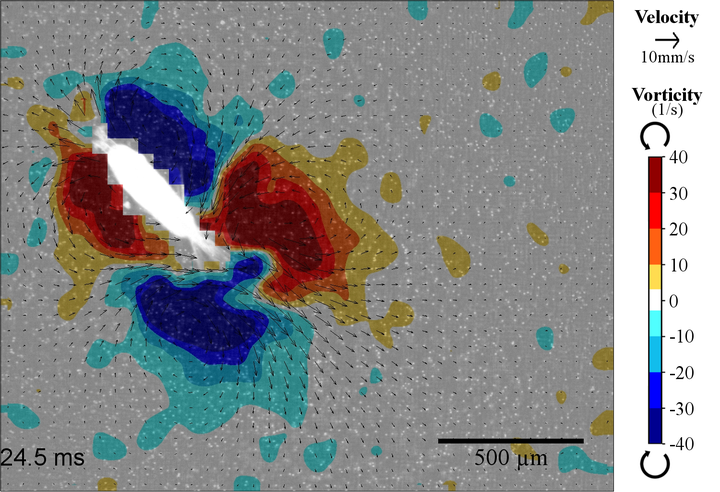Swimming kinematics and hydrodynamics of barnacle larvae throughout development

Abstract
Changes in size strongly influence organisms’ ecological performances. For aquatic organisms, they can transition from viscosity- to inertia-dominated fluid regimes as they grow. Such transitions are often associated with changes in morphology, swimming speed and kinematics. Barnacles do not fit into this norm as they have two morphologically distinct planktonic larval phases that swim differently but are of comparable sizes and operate in the same fluid regime (Reynolds number 100–101). We quantified the hydrodynamics of the rocky intertidal stalked barnacle Capitulum mitella from the nauplius II to cyprid stage and examined how kinematics and size increases affect its swimming performance. Cyprids beat their appendages in a metachronal wave to swim faster, more smoothly, and with less backwards slip per beat cycle than did all naupliar stages. Micro-particle image velocimetry showed that cyprids generated trailing viscous vortex rings that pushed water backwards for propulsion, contrary to the nauplii’s forward suction current for particle capture. Our observations highlight that zooplankton swimming performance can shift via morphological and kinematic modifications without a significant size increase. The divergence in ecological functions through ontogeny in barnacles and the removal of feeding requirement likely contributed to the evolution of the specialized, taxonomically unique cyprid phase.
Supplementary Videos
Video S1
Movement tracking of swimming Capitulum mitella nauplius VI from ventral view (50× slow motion).
Video S2
Movement tracking of swimming Capitulum mitella cyprid from dorsal view (100× slow motion).
Video S3
Velocity and vorticity fields around swimming Capitulum mitella nauplius VI from ventral view (50× slow motion; same individual as in Video S1). Nauplius swam in Re of 2.6.
Video S4
Velocity and vorticity fields around swimming Capitulum mitella cyprid from dorsal view (100× slow motion; same individual as in Video S2). Cyprid swam in Re of 4.8.
Video S5
Separation of velocity stagnation points from vorticity maximums/ minimums in trailing viscous wake vortices of cyprid (1000x slow motion). Individual used is identical to the one in Video S4.
Video S6
Velocity and vorticity fields around swimming Capitulum mitella nauplius III from ventral view (50× slow motion). Nauplius swam in Re of 0.6.
Video S7
Velocity and vorticity fields around swimming Capitulum mitella cyprid from dorsal view (100× slow motion). Cyprid swim in Re of 1.8.